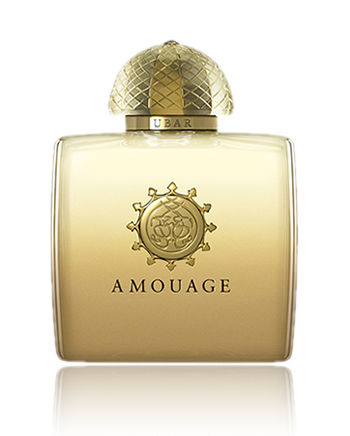Innuendo no piensa derribar la puerta a fuerza de golpes sino que, probablemente, llamará con delicadeza. Estén advertidos, sin embargo, de que una vez adentro, quizás decida no irse nunca. Pensado por su creador –Roja Dove– como un “homenaje a todo lo femenino”, se siente tan suave como un pañuelo de fina seda.
Innuendo sugiere tonos durazno pálido o gris torcaza: frescos y cálidos a la vez, sin dramatismos. Resulta tan reconfortante como pasar una tarde haraganeando en la cama, acariciando un gato dócil y dejándose sedar por su ronroneo…porque Innuendo ronronea, susurra y juguetea con languidez. Al rociarlo se materializa un enorme bouquet dominado por jazmín y duraznos, orris y la respiración ronca del patchouli. Por momentos, el jazmín y el patchouli hacen aflorar un aire de familia que emparenta al dulce Innuendo con el más severo Unspoken. Delicado y envolvente, camina la cuerda floja entre lo jugoso (potenciado por notas de naranja, frescas violetas y rosa) y lo atalcado (sándalo, tonka y el ya mencionado orris). Las flores y maderas descansan sobre una base de almizcle blanco, con su inherente jabonosidad (o champuosidad¿?); si son aversos al almizcle blanco es probable que Innuendo no los haga cambiar de opinión. El sillage y la longevidad son fantásticos.
Para llevar con una hilera de perlas…o, mejor, con tres.
Caro
Origen de la muestra: muestra de parfum obsequiada por compra en Osswald, NYC
Roja Parfums Innuendo Pour Femme parfum – A gentle sweetness
Innuendo won’t kick your door open but knock politely instead. Be warned, though, that once it enters, it will probably never leave. Intended by its creator –Roja Dove– as an “homage to everything feminine”, it feels as soft as the finest silk scarf.
Innuendo suggests dove grey or pale peach hues: fresh and warm at a time, far from dramatic. It is as comforting as spending the afternoon lazying in bed, stroking a docile cat and becoming sedated by his purr…because Innuendo purrs, whispers and plays languidly. Upon spritzing, a huge bouquet dominated by jasmine and peaches, orris and the raspy breath of patchouli materializes. Every now and then, the jasmine and patchouli bring to the surface a certain air de famille which relates the sweet Innuendo with the more stern Unspoken. Gentle and enveloping, it walks the tightrope between juiciness (powered by notes of orange, fresh violets and rose) and powderiness (sandalwood, tonka and the aforementioned orris). The flowers and woods rest on a base of white musk, with its inherent soapiness (or shampoo-iness); if you are generally averse to white musk, Innuendo will probably not turn you into a convert. Sillage and longevity are fantastic.
To be worn with a strand of pearls…or, better yet, with three.
Caro
Origin of sample: parfum sample gifted with purchase at Osswald, NYC















